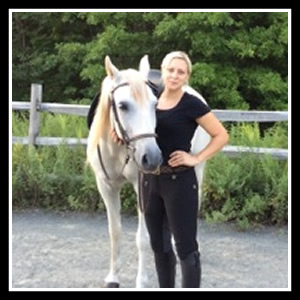The Making Of A FEI Horse
(Quickly scroll to bottom of page and the music will stop) Our goal is to give renewed inspiration to dressage enthusiast who are discouraged by the thought that one needs a “super” horse to be competitive or to even enjoy Dressage and to those that have a “super” horse but it is more “cranking & spanking” than light and harmonious. We would like to prove that a “non-super” horse is capable of reaching the upper levels with systematic training that adheres to the principles of Classical Dressage.
There have been numerous extremely informative books published on this very subject, the best are from the Classical Masters. The written word can be lacking at times simply because of the lack of visual information. We are trying to bridge that gap and give you a real life example. As the saying goes “easy to talk the talk, harder to walk the walk”.
Join us on our journey with Perhaps, a 15.3 hand TB/WB mare. This first video of her is in 2005.
Perhaps is not a “super-horse”, she is representative of the type of horse many riders have. She is obviously very unbalanced, no natural suspension or cadence and extremely nervous. Her natural inclination was to go flat, fast, tense and behind the vertical. Very little development in her topline.
Her training had to be adjusted to compensate for her temperament. One of the first exercises we usually do with green horses is to lunge them. There is an art to lunging, not to exhaust the horse to the point of submission. It is riding from the ground but without the weight of a rider hindering the horse’s ability to lift and work through the back. Unfortunately for Perhaps this was often too excitable for her and was going to result in an overly fit, untrained horse or an injured one. We did a lot of in-hand work with her to help her learn to control her emotions and to teach her the aids from the ground.
Under saddle we would first like them to stretch (down and out) to begin developing the idea of lifting their backs, reaching under their bodies with their hindlegs and developing impulsion. There is a bio-mechanic reason why this is helpful. The horse’s head and neck work like a lever; when the spinal column in the neck is straightened and stretched down (not curled to the chest and behind the vertical) it pulls the tendon and ligaments forward, lifting and separating the vertebrae in the back. The first step to developing a horse is to create relaxation, rhythm and a supple back. The horse must first develop the “pushing” muscles (the ability to reach under the body and move forward, straight and with power) before engaging the “carrying” muscles, the muscles that allow a horse to collect.
Here is Perhaps in 2006, one year later.
Perhaps is connecting more, still needs to continue on work that will encourage her to take more weight behind but we are seeing what we would like at this stage. She is reaching under, working through her back while maintaining the purity of the gait (front/hind legs on same plane). She is ready to begin more “collecting” type exercises.
Here she is in 2007.
At this point my partnership with Perhaps has resulted in getting my Silver medal. She is developing a nice rhythm and is becoming relaxed and supple. She is still unbalanced in the canter, lead changes are not straight and uphill yet and her pirouettes are still “hopping” instead of maintaining a true canter. She needs to continue to develop more carrying ability and her balance will improve. She is still a little quick in her step, once again a strength issue.
Perhaps is developing more ability to bend the joints in the hindlegs and take more weight behind. She will begin to be able to slow her step as she is able to carry more. Her lead changes are still not completely balanced (she gets excited/tense) but we are happy with her progress. Her neck at times gets too short. She was “broken” between the second and third vertebrae as a young horse. Horses are sometimes ridden with too much contact in too high of a frame (ridden front to back) before they have the proper strength and balance. To avoid the pressure of the heavy contact they over bend their neck and lighten the contact. This is a serious fault in training and can take much time to correct.
I will update this page soon…



